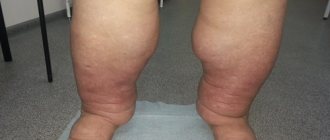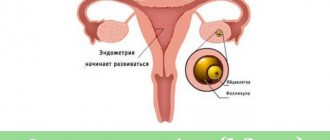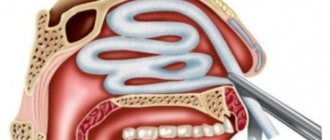Menstruation has haunted women at all times. Both in the Middle Ages, when there was no running hot water, and in antiquity. Against this background, the first modern, widely available menstrual hygiene products appeared quite recently - in 1918.
Since then, a lot has changed: synthetic ones have been added to natural materials, adhesive strips and “wings” have been added to pads, and tampons have acquired a variety of sizes and lost applicators. Everything to make their use more comfortable.
But since the 1980s, the United States began to notice a strong increase in the number of cases of toxic shock syndrome - several women who used tampons died. Subsequent studies have failed to find a link between tampons and TSS, but this factor is the main factor in the question “which is better than tampons or pads for menstruation?”
The choice between a tampon and a pad is difficult for many girls. Having different advantages and disadvantages, these products do not mix well and are most useful in different situations. Let's figure out what is better and whether such a question is appropriate.
Tampon
A tampon is a small cylinder usually made of viscose and cotton. It is inserted into the vagina using an applicator or finger and absorbs menstrual flow from the inside.
A tampon may be useful because:
- Likely convenience.
A correctly selected and installed tampon cannot be felt. It won't fall out, get lost, come off, and most likely won't leak. The tampon is changed once every 8 hours or after filling with liquid, which is also very convenient. - You can swim.
The fact that you should not go into water during menstruation is just a myth, but there is a rational grain in it. During this period, the cervical canal is expanded and this is enough for bacteria, microorganisms or chlorine, if it is a swimming pool, to enter the uterus. A tampon will prevent trouble from happening and help you avoid illness. - Hidden method of hygiene.
With a tampon, it is not a problem to wear a tight-fitting or open outfit - its outline will not be visible and the problem of a tampon leaking, if selected correctly, is lower than the probability of a pad leaking. And it doesn’t smell while it’s inside, since it doesn’t come into contact with air. - Virgins can. “The hymen will break” is also a myth. It has an opening large enough to insert a tampon and is very stretchable. Also, the tampon is quite soft and it is almost impossible to damage anything with it, not to mention the fact that “virginity” is a social concept, not a physiological one.
There are also disadvantages to using tampons:
- May cause discomfort.
Manufacturers and instructions for tampons say unequivocally: inserting and removing a tampon should not cause any inconvenience and certainly no pain. But the body is individual and unpleasant sensations may arise. - Cannot be used for infectious diseases.
Some gynecologists draw girls' attention to the fact that during periods of inflammation or infection, stagnant discharge can be a favorable environment for the development of bacteria, fungi and microorganisms. - If you're squeamish, it won't work.
Not everyone may be comfortable inserting and removing a tampon by hand. But if for the first there are tampons with applicators, then for the second auxiliary tools have not yet been invented. - As a rule, you cannot sleep with him.
In a dream, there is no way to track how full the tampon is and whether it is time to change it. Moreover, you should not use a tampon if your sleep lasts longer than the maximum period for changing a tampon - 8 hours. - Toxic shock syndrome.
This rare complication occurs 3-4 times per 100,000 people, but is very dangerous. It occurs due to infection and proliferation of streptococci or staphylococci, which produce toxins. 50% of TSS cases occur after the use of tampons and are potentially fatal.
The variety of tampons is huge: different sizes, absorbency, with or without an applicator, and even with a special sliding coating. Finding ones that are convenient for you is just a matter of number of attempts. The main selection criterion is absorption. Its level may vary and is marked on the packaging in the form of “drops”. Each drop adds 3 milliliters to the tampon's maximum absorption capacity.
Types of tampons
Manufacturers today offer a huge variety of tampons. They are most often classified according to their degree of absorption:
- Mini. The products are suitable for starting menstruation with scanty discharge.
- Normal. They are optimal for women whose menstruation is characterized by light discharge.
- Super. These products are recommended for use in cases of intense discharge. They are suitable for the second or third day after the start of menstruation.
- Super plus. These tampons are used for heavy menstruation, and they are also reliable protection at night.
Many women are loyal to specific brands. The most famous tampons are from the following manufacturers:
- Tampax. These products were the first to appear on the intimate hygiene products market. They are made from bleached cotton fiber mixed with viscose. Ease of use is ensured by a special applicator. Thanks to it, the risks of accidental infection in the vagina are minimized.
- "ABOUT. b." A characteristic feature of the products is the presence of shallow grooves of a spiral shape. Thanks to them, reliable protection against leaks is provided. Despite the lack of applicators, ease of administration is guaranteed by the silky outer coating. The composition of the tampon allows you to maintain healthy vaginal microflora.
- Kotex. To make tampons, the manufacturer uses cotton fiber with the addition of silk. Safety of use is guaranteed by the antibacterial composition. Recognition of products is ensured by bright design.
Pad
A pad is a pad made of a polyethylene base, an absorbent inner layer and an upper permeable layer. It is attached to underwear with an adhesive strip and collects secretions, fitting tightly to the perineum.
The gasket is useful if:
- Heavy periods.
There are times when there is so much discharge that even the most absorbent tampon cannot cope with it. Then you can use the intended pad or duplicate the wicking system using both products. - The tampon causes discomfort.
“Unpleasant sensations” also include psychological discomfort. If finding a foreign object in the vagina seems unpleasant, do not force yourself. - Are you going to sleep?
Unlike tampons, the pad is not inside the body and can be used for longer than 8 hours. For better protection in a supine position, special “night” pads are produced that are large in size. - There is an inflammatory process going on.
Although the pad can become a home for bacteria, it is easily and quickly replaced with a clean one, that is, it does not contribute to the spread and strengthening of the infection.
The disadvantages of the application are not so obvious. The gasket is bad if:
- Afraid of the sight of blood.
Some girls, however, may be bothered by the sight of their own blood on a used pad. Moreover, it will be unpleasant to carry out the necessary manipulations to change it. - There will be no place to change.
The pad should be changed every 3-4 hours and if there is no place during the day where this could be done, it is worth using a longer wearing product. - You smell an unpleasant odor.
The blood on the pad is constantly in contact with air and decomposes, oxidizing. Because of this, there may be a specific odor associated with poor hygiene. - Take care of the environment.
Pads, like any other hygienic material that comes into contact with blood, must be disposed of in a special way, that is, burned at a temperature of 800 C°. Since this does not happen, the gasket, which is partially made of plastic, will take hundreds of years to decompose, polluting the environment.
The absorbency of pads is determined by their thickness and size. The larger these parameters are, the more the gasket absorbs liquids. But it is worth remembering that the large possible volume does not allow you to change the gasket less often. Regardless of how full it is, it must be changed after 3-4 hours.
Women's pads
Sanitary pads, also known as menstrual pads or feminine pads, are a special medical product made of absorbent material that absorbs menstrual blood. They attach to the inside of your underwear. These disposable pads are for one time use only. However, there are reusable sanitary pads - they are made of fabric that can be washed, dried and reused again.
Feminine pads are available in a variety of shapes and sizes, and with different capacities that help absorb both light and heavy menstrual bleeding. Finding the right type and size of gasket for your individual needs can involve a little trial and error. Although sanitary pads have become much sleeker and more varied in design over the years, you still hear different reviews and horror stories from time to time.
Feminine sanitary pads: pros and cons
Women with heavier periods prefer to wear sanitary pads instead of tampons. Pads are also ideal when you are just learning about your menstrual cycle and, as a virgin, find it difficult to insert tampons.
Other benefits of using sanitary pads:
- There is no risk of toxic shock associated with wearing sanitary pads.
- Feminine pads are much cheaper than tampons.
- They are available in various options.
- The pad is safer for the hymen.
- You can wear them all night without worry.
- There is no need to insert anything into the vagina,
- There is no irritation or vaginal dryness.
Even though these pieces became thinner and thinner over the years, they were still sometimes visible under certain clothing. Of course, there is nothing to hide here and this is a normal, natural process, but many women still feel awkward if this protective “mat” could be accidentally noticed by someone.
Cons of gaskets
The main disadvantages of sanitary pads include:
- You can't swim in them.
- tend to move out of place.
- make a very obvious sound when you remove them from your underwear.
- they cannot be worn with some types of panties (thongs, tango).
- The pads should be changed every four to five hours to avoid unpleasant odors and possible accumulation of bacteria.
Contact dermatitis, or private rash, is another potential downside to wearing sanitary pads. This may cause itching, redness and swelling. Typically, the rash occurs as a result of skin irritation due to the material the pad is made from. In other cases, the mixture of heat and moisture can lead to a buildup of bacteria, causing dermatitis.
Many manufacturers these days add fragrances to their pads to combat the problem of vaginal odor. Some women may have sensitive skin that reacts to these scents. However, most sanitary napkins typically place a scent layer underneath an absorbent core, meaning this layer does not come into direct contact with your skin. However, sometimes allergic reactions and rashes may occur due to the fragrance used.
In addition to contact dermatitis caused by the components of the pad itself, friction caused by wearing the sanitary pad itself can also cause discomfort.
How to choose between pads and tampons
Both pads and tampons primarily differ in the amount of secretions they absorb. Due to the area of the pad, this volume is larger and due to the inclusion of special polymers, which turn into a gel when wetted, they absorb better. But if there are no other reasons to refuse a particular product, you should first determine how much menstrual blood is released during the wearing period.
You can use a pad for this purpose: weigh it before use and after a change or after 4 hours. The data obtained will help you choose both a tampon and a pad and understand whether a tampon can be used at all.
The main thing in selection is internal comfort. Hygiene products are as accessible as possible, allowing you to try many options. The search may take a lot of time, but it will allow you to choose the optimal remedy.
Tampons - benefit or harm
During menstruation, a woman uses all possible hygiene products to alleviate her condition and maintain cleanliness. Vaginal tampons are considered the most popular. But how harmless are they to health? Doctors say that every woman should know the possible unpleasant consequences of using tampons.
- You should not use vaginal tampons if your menstruation is accompanied by the release of blood clots. The fact is that in the presence of a tampon, the “lumps” do not find a way out and accumulate in the vagina and even the cervix. And this is fraught with the accumulation of blood in the uterine cavity, which leads to forced curettage
- If you have genital infections, then using tampons is extremely undesirable - in addition to the main symptoms, inflammation and irritation of the vagina may occur.
- There are women. who suffer from regular muscle spasms, the use of tampons is also contraindicated for them.
- Fungal diseases develop in a humid and warm environment, and in order not to aggravate the situation (for example, with thrush), tampons should be abandoned.
In addition, do not forget that inflammatory diseases of the vagina and even banal irritation of the labia can lead to severe allergic reactions. Therefore, before you start using tampons, you need to consult a gynecologist. If it is not possible to visit a doctor, then if you experience the slightest discomfort in the vaginal area or causeless heaviness in the lower abdomen, get rid of the tampon and after menstruation undergo a preventive examination by a gynecologist.
Modern manufacturers offer women the use of sanitary pads. Moreover, they can be made using decoctions of medicinal herbs - you need to be extremely careful with such products. After all, the body can react with an allergic reaction even to harmless, at first glance, pharmaceutical chamomile. And then... After all, all these “fragrances” and flavorings are chemical substances and how they will be perceived by the body is unknown, especially since they are supposed to be in close contact with the delicate mucous membrane of the genital organs.
Gynecologists recommend using vaginal tampons only in extreme cases - for example, you are going to the pool or river with a group of friends. And choose sanitary pads without any fragrances or additional “medicinal” effects. Then you don’t have to worry about your own health - sanitary and hygienic standards will be observed.
Which is better: tampons or pads?
There is no definite answer to this question - everything is very individual. It's like comparing butter with 72.5% fat and butter with 82.5% fat: there is almost no difference, but everyone has their own preferences.
Hygiene products have not been around for very long, and researchers are yet to find out what is safer. For health, at the moment, both options are considered harmless. Each woman determines what is more convenient for herself, based only on personal feelings. Doctors have differing opinions on the issue: some say that tampons are extremely harmful, while others advise using them.
For those who do not accept disposable hygiene products for one reason or another, there are alternative methods. For example, menstrual cups or reusable cloth pads.
Instructions for products with an applicator
Experts always begin a consultation on how deep to insert a vaginal tampon with the fact that it is necessary to carefully observe personal hygiene. Both the genitals and hands should be washed with soapy water. Only after this can you begin the procedure.
The position in which it is preferable to insert a tampon is chosen by the woman herself. This is either standing, with your leg raised - for example, on the edge of the bathroom, or sitting, like over a toilet. An indispensable condition is maximum relaxation to reduce the risk of discomfort in the vagina.
After removing the tampon from the package, it needs to be placed between the thumb and middle finger of one hand - exactly in the place where the narrow part of the applicator enters the wide cylinder. At this time, the lower labia are parted with the other hand. With maximum relaxation, insert the free tip of the wide part of the product into the vaginal canal.
You can understand that the insertion depth is sufficient by the fact that the fingers fixing the applicator have touched the skin of the perineum. At this moment, you need to gently press the narrow cylinder of the applicator with your index finger so that it moves inward. The tampon will be at the required depth and will not fall out. Then the entire structure is removed so that the thread of the product is visible from the outside.
Contraindications
Like most medical and hygienic products, vaginal tampons have a list of contraindications for their use:
- any inflammatory processes in the pelvis;
- individual tendency to allergic reactions - many products are impregnated to give them a pleasant aroma;
- congenital anomalies of the genital organs;
- excessive dryness of vaginal tissue;
- carrying out medical procedures in the vagina;
- first 2.5–3 months after birth;
- information in the anamnesis about ITS of various etiologies.
A gynecologist will tell you detailed information about the specifics of using tampons when a woman seeks advice.











